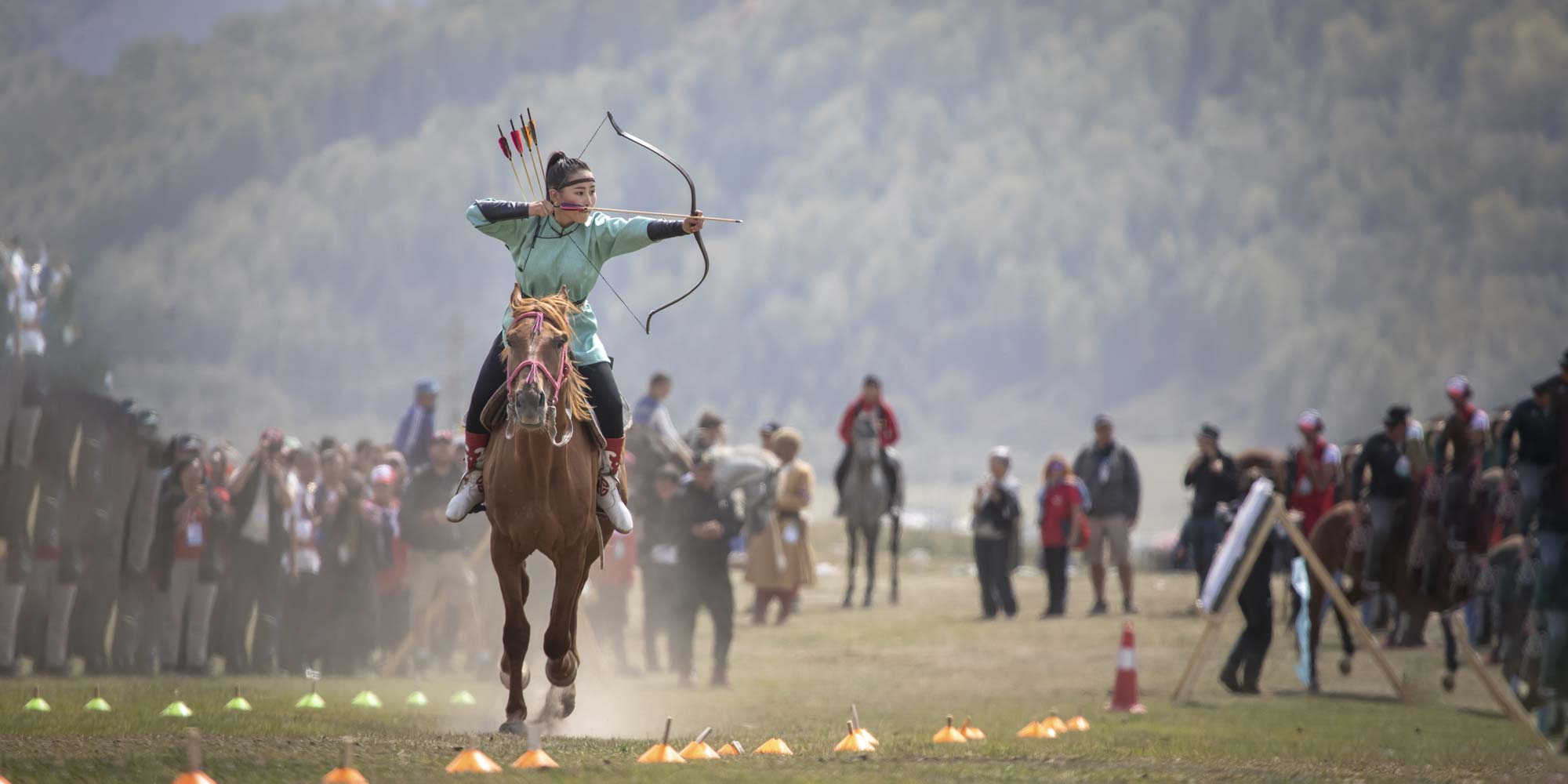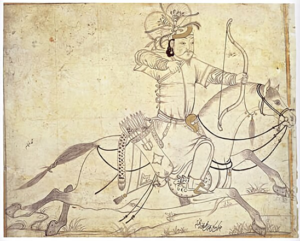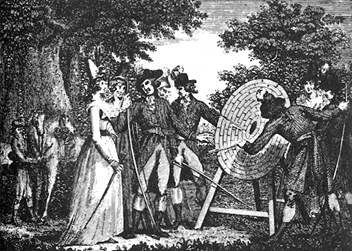
The Mongolian bow is a composite recurve bow built in the traditional way from layers of wood, animal horns and sinews layered together so that the wood or bamboo is at the heart of the bow, the sinews face outwards and the horn strengthens the inside of the wing.
Today, the earliest documentation of composite bows in this style comes from 2000 BC (according to archeological findings and art from that time) but researchers in the field say that the history of these bows was largely unwritten and developed alongside other unwritten traditions. Ancient evidence suggests that these bows could hit their target from half a kilometer away.
An integral part of the Mongolian bow is the form of use that developed around it with the rise of the Iron Age and is the mounted bows. The mounted bows of that time were used by many peoples that preceded the Mongols. The Indians also used to hunt by shooting on horseback, although this only began in the 15th century when horses returned to the American continent. The Mongolian bow was shorter than the other bows of the time and still reached strengths that allow for use in hunting or war thanks to its clever design and construction. What made them ideal for use while riding was also its short length and the possibility to shoot it from both sides of the handle.
The war theory of the peoples of the region at that time was characterized by two types of bows: the “light” and the “heavy”:
The light mounted archer was a constant nuisance to the enemy forces. They would attack the enemy from the sides or the rear and through their high speed would avoid direct confrontations and hit the enemy from anywhere at any time from the initial charge to the retreat where the archers would turn in their saddles and continue to fire at the enemy. The other side decided to retreat while the archers retreated? They would immediately turn around and chase the enemy until there was nothing left of him. The light archers were a fast and deadly shock force in the ranks of the army of that time.
The heavy archers would fight with a simpler method. They would rain arrows on the enemy as a single unit and in a direct charge rather than a retreat that simulates an assault like the light bows and after the enemy was weakened, they would charge him with short range weapons like spears.
Compared to the modern bows, the Mongolian bow has a very different shooting technique, for example, from the longbows of that time. The Mongolian bow is stretched using the thumb with a special ring that protects the finger and was made of metal or animal horn.
The bow wraps the thumb around the string and places the index finger on it. And at the moment of release the bow pushes the bow “out” (to the right-left bow).

To this day there are festivals that celebrate Mongolian archery culture and many of the peoples of the region have strong traditions related to archery. In the modern era, these bows belong to the category of traditional shooting and are taught around the world and even here in Israel.
The Longbow is a bow that was used by our ancestors in wars for thousands of years. An ancient crossbow found of this type in Denmark was made as early as 9,000 BC and longbows are still used today in the modern archery world.
The bow would reach a length of about 70 inches. It was built with relatively narrow and thick wings (in the shape of the letter D in English) and they do not have a recurve like the modern recurve bows. The thicker wings give the bow high durability but make the draw more difficult and the “return” speed of the wings was slower so the arrow flies slower but with great power. The longbow was a powerful bow and estimates say its draw weight was between 81# and 130# pounds (36.7-59 kilos).
In the war the longbow was one of the more significant weapons on the battlefield. In training, the archers of the army would line up together and shoot into the sky to hit the flags at measured distances. In the battle itself they would each shoot almost 12 arrows per minute creating a maximum firing rate of half a million arrows in less than 10 minutes.
The most famous and well-known battle of all is the Battle of Agincourt in 1415 in which Henry V, King of England, defeated a frontal cavalry charge with the help of his bows, something that had not been done before in that area of the world.
Another reason why the bow became a main weapon of war in the armies of the past is the ease of “circulation” of the ammunition and the relative ease of its production compared to cartridges or other weapons.
The first ancient army to adopt the bow as their doctrine of war was the Norman army (French) and after the English lost against the bows at the Battle of Hastings they adopted the longbow and following this decision they won many battles in the war against the French.
The average archer of that time was a simple citizen, a farmer rabbi or other citizen who was given a bow and taught to shoot, while the aristocracy did not learn to use a bow.
Due to the extreme weights of the archers and the lack of care for his physical health, the average archer would suffer from hardening of the archer’s shoulder bones and deformations of their entire internal anatomical structure
(Left: Picture of a skeleton of an English archer. The crooked shoulder structure is a direct result of shooting from a young age)
The bow began to leave the battlefield after the invention of the rifle which was easier to use and required much less practice and training than the common soldier.
In conclusion, the longbow bow was a piece of technology that changed the face of the wars of that time and although from a modern perspective the world of archery has progressed light years from the relatively primitive design of the bow it is still an integral part of modern archery culture and still exists in clubs around the world, it has a defined competitive category in the International Archery Association and the tradition of firing this bow has continued ever since.
Written by: Shay Torres





